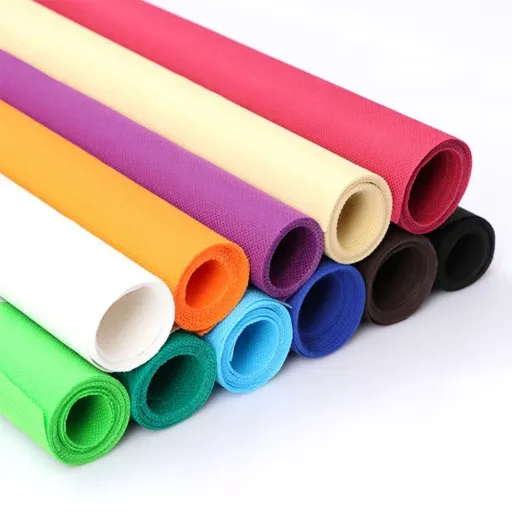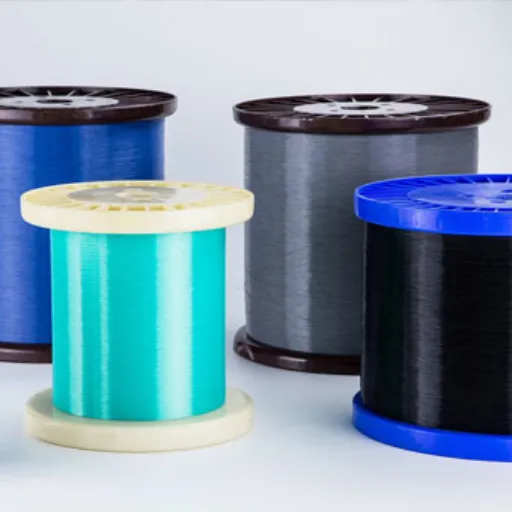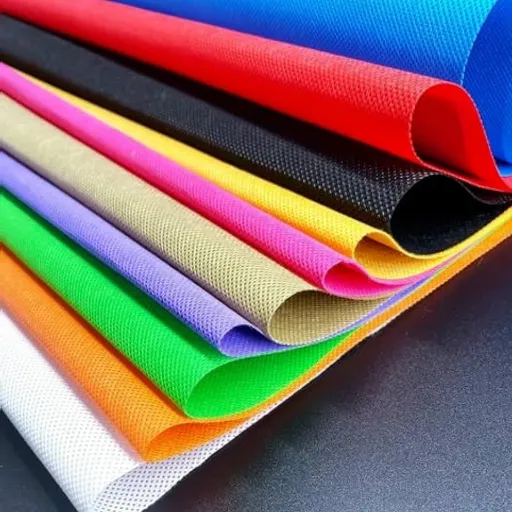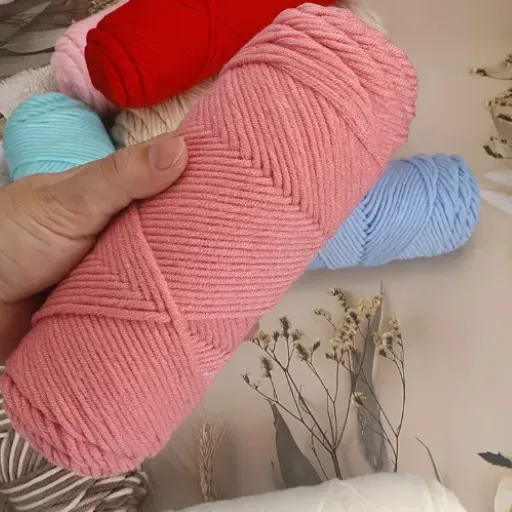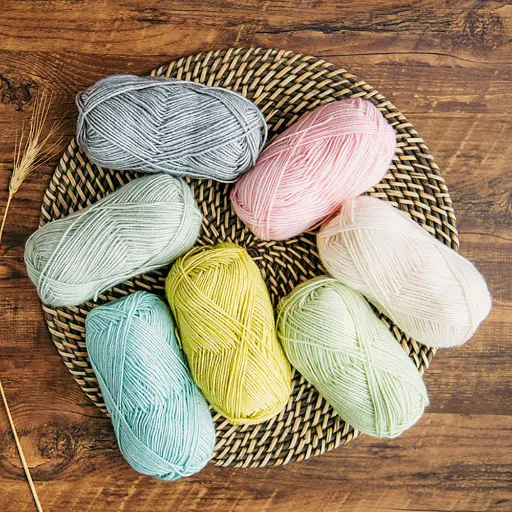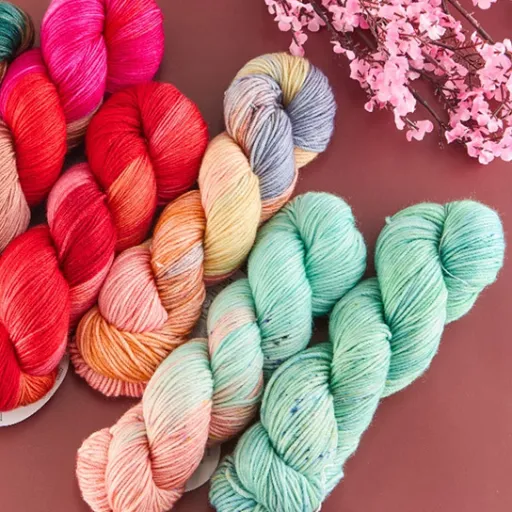Acrylic yarn has become an essential element in the creative and craft industries, and its additional properties contribute to its desirability among craftspeople. But what exactly is it made of, and what features compel creators to want acrylic yarn for all sorts of projects? This blog post provides an overview of acrylic yarn. It delves into fiber classification to understand the fundamental basis for its fiber characteristics, which collectively contribute to its feel, durability, and performance. Whether you are a seasoned crafter, an amateur experimenting with new materials, or just curious about the science used in everyday yarn, this guide is sure to give you some insights into why acrylic yarn is still a favorite for so many creative outlets. Stay with us, and you will discover what makes this synthetic fiber a standout in the world of crafting.
What is Acrylic Yarn?
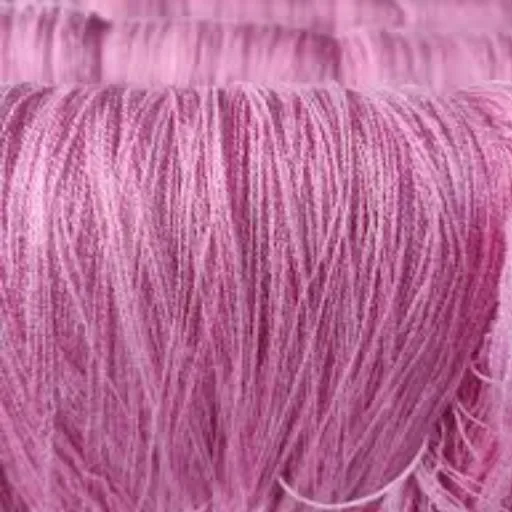
Acrylic yarn is a synthetic fiber produced from polymer materials mostly derived from acrylonitrile. It is a synthetic wool designed to mimic the appearance and feel of natural fibers, yet with enhanced durability and an affordable price. Being relatively lightweight and soft, acrylic yarn has gained widespread usage in knitting, crocheting, and other kinds of crafts due to its versatility. It has further reputed advantages, including being machine-washable, highly resistant to wrinkling, and available in a wide range of colors, making it a convenient choice for both beginners and experienced crafters.
Key Characteristics of Synthetic Yarn
Some other merits of synthetic yarn that make it THE solution for questions passed are:
- Durability – Synthetic yarns are characterized by their strength and resistance to abrasion and weathering, making them ideal for goods subjected to constant use, such as blankets, sweaters, and bags.
- Low Maintenance – Most synthetic yarns can be washed in a washing machine and do not shrink, stretch, or wrinkle, making them suitable for daily use.
- Affordable – Of course, synthetic yarn is only slightly cheaper than natural yarn, making it a cost-effective option for large projects or beginners just starting in their craft.
- Versatile Color Options – Synthetic yarns are available in a wide range of colors, allowing designers to create virtually limitless choices and patterns.
- Allergy-Friendly – Unlike some natural fibers, such as wool, synthetic yarn is less likely to cause allergic reactions and is thus an acceptable alternative for sensitive individuals.
Comparison with Natural Fibers
Several key distinctions can be made between synthetic yarns and natural fibers, such as cotton, wool, and silk. Hence, synthetic yarns such as acrylic, nylon, or polyester are known to be resistant to abrasion, surpassing natural fibers in this quality. Being natural, however, these fibers have a greater advantage in terms of breathability and comfort, as natural fibers are derived from organic sources that naturally assist in regulating temperature and moisture. Generally, synthetic yarns are cheaper and available in large quantities, but natural fibers are preferred because they are environmentally safer and constitute biodegradable materials, hence making them sustainable. Nevertheless, technology is making inroads to close this gap between the two materials, offering options such as recycled synthetic yarns that promise good performance while being environmentally responsible. The choice then remains in terms of practicality, including cost, aesthetics, or sustainability, depending on the project’s requirements and the user’s priorities.
Composition of Acrylic Yarn
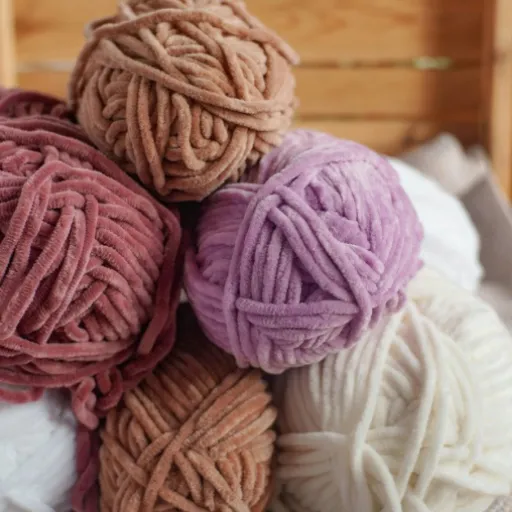
Acrylic yarn is usually considered a synthetic polymer yarn made from acrylonitrile, a petrochemical derivative. The production of these fibers occurs through a process known as polymerization, where acrylonitrile monomers join to form long-chain molecules. The fibers produced are incredibly lightweight, soft, and durable, rendering them preferable for knitting, crocheting, and other textile applications. Acrylic yarn has its merits, including being inexpensive, offering an unlimited range of color choices, and being resistant to moths and mildew.
Materials Used in Production
Acrylic yarn is mainly made from acrylonitrile, a petrochemical derivative, as the core ingredient. During manufacturing, acrylonitrile is usually compounded with other materials, such as vinyl acetate or methyl acrylate. These admixtures modify the fiber properties, increasing flexibility, dye absorption, or imparting texture to the yarn. The polymerization process yields a rigid synthetic material, making the yarn adaptable to various uses.
Role of Acrylonitrile in Yarn Properties
Acrylonitrile acts as a determinant of strength and utility in synthetic yarns. The substance is a chemical structure that facilitates the production of lightweight and durable fibers, suitable for a wide range of versatile uses. When these yarns are copolymerized with other monomers, such as vinyl acetate or methyl acrylate, they introduce added elasticity and abrasion resistance. Additionally, the yarns made from acrylonitrile demonstrate the general capability of retaining shapes, withstanding severe environments, and resisting UV degradation; hence, these properties qualify the fibers for application in fashion and industrial textiles, offering a compromise between performance and longevity.
Benefits and Drawbacks of Using Acrylic Yarn
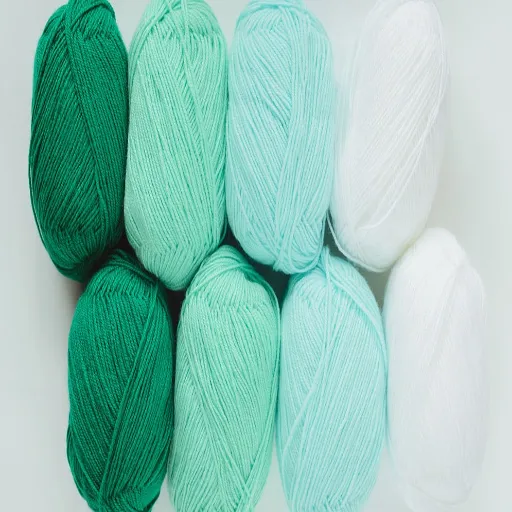
✅ Benefits of Acrylic Yarn
- Affordability: Being less expensive than natural fibers like wool and cotton, acrylic yarn is suitable for larger projects.
- Durability: It resists wear and tear, fading, and the action of external agents, making the finished products highly durable.
- Versatility: Acrylic yarn is available in a wide range of colors, textures, and weights, making it suitable for various applications.
- Low Maintenance: Wash with a machine and dries fast; less effort is needed to maintain.
❌ Drawbacks of Acrylic Yarn
- Environmental Impact: Being synthetic and petroleum-derived, acrylic yarn poses serious ecological concerns when compared to natural fibers.
- Heat Sensitivity: It melts when exposed to high heat and hence cannot be used in such situations.
- Comfort: It may feel breathable or synthetic to most, whereas acrylic yarn may be less than comfortable for anyone with sensitive skin.
Pros of Acrylic vs. Natural Yarns
- Affordability: Acrylic yarn is generally more affordable than natural yarns, such as wool, silk, or cotton, making it a popular choice among crafters on a budget.
- Durability: Acrylic yarn resists pests like moths and, in general, does not decompose as quickly as many natural fibers, thus guaranteeing a longer life for our crafting.
- Color Variety: These yarns arrive in any shade or hue conceivable, all with unfading brilliance, allowing for a great range in creative applications.
- Low Maintenance: Acrylic yarn allows for machine washing and does not shrink or felt, unlike many natural fibers that require gentle care.
- Allergy-Friendly: Those allergic to animal fibers, such as wool, find acrylic comforting as it is hypoallergenic yet soft.
Cons: Environmental Impact and Microplastic Release
The environment is one of the significant drawbacks posed by using acrylic yarn. The fiber is synthetic, derived from petroleum or other non-renewable resources. It is energy-intensive and emits carbon emissions, thus harming the environment. Additionally, washing any product made from acrylic yarn releases tiny plastic fibers, known as microplastics, into the waterways. Recent studies have found that microplastics accumulate in oceans and other water bodies, posing a threat to marine life and ecosystems. These particles are pretty challenging to clean up from the environment, while their long-term effects on wildlife and human health remain an area of ongoing research. Acrylic yarn has its perks; however, its environmental concerns have prompted consumers to seek greener alternatives or adopt sustainable practices for acrylic yarn usage.
Applications of Acrylic Yarn in Crafts

Acrylic yarn is a favorite among artisans due to its versatility, durability, and affordability. This yarn is widely employed in knitting and crocheting projects such as scarves, hats, blankets, and sweaters. Its unparalleled resistance to fading will let you create very colorful and lasting pieces that can simply be washed. We have seen it used in crafting home decor items such as pillows and rugs. The variability of colors and textures makes it very popular. Being cheap makes it an excellent choice for an amateur wishing to explore various crafting techniques.
Everyday Items Made with Acrylic Fiber
Acrylic fiber is versatile for both machine and hand-embroidery purposes, making it suitable for creating a wide range of items. In graver uses, lay sweaters, socks, gloves, and scarves, due to warmth and durability. Apart from the fields of apparel, acrylic is exceptionally suitable for cotton textiles in homes, including blankets, cushion covers, and curtains, which dye brightly and ensure easy care. It must have weighed a lot for upholstery and outdoor furniture, considering its application-resistant properties, as well as its resistance to fading and moisture. Acrylic is the name! Acrylic fiber is also used in craft materials, whose synergy yields measurable outputs, such as yarn and felt, thus keeping it highly favored in DIY and artisanal manufacturing.
Best Practices for Care and Maintenance
When it comes to acrylic care, I adhere to a few simple yet effective practices. I wash clothes in cold or warm water on a gentle cycle, using a mild detergent to avoid affecting the texture or color of the fabric. When drying, high heat is never an option; air drying or tumble drying on low is preferred to prevent damage or shrinkage. When it comes to stains, I would gently dab with a damp cloth, avoiding scrubbing to prevent damage to the fibers. Regular brushing or shaking off any dust will keep the acrylic looking good and vibrant.
Choosing the Right Yarn for Your Project

Here are a couple of additional factors to keep in mind before selecting the appropriate yarn for your unique project:
Understanding Fiber Blends and Their Benefits
With fiber blends, two or more fiber types are combined in a way that retains the best qualities of the constituent materials, thus producing yarns of superior versatility and durability. For example, wool-acrylic blends keep one warm, stretch out nicely, and are easy to care for. In a very similar manner, they would combine cotton with silk to keep it soft yet add lustre, all without sacrificing the breathability of cotton. The blend strikes a balance between the comfort, strength, and visual appeal of the conjoined fiber, meeting both creative and functional requirements. Being aware of how fiber blends can behave based on the properties of their constituents allows the craftsperson to select blends best suited for their project, whether it is clothing, accessories, or interior decor.
Final Tips for Crafters Using Synthetic Yarn
When sewing with synthetic yarn, consider the project’s theme and the yarn’s inherent features. Synthetic fibers, such as acrylic, polyester, and nylon, are dependable, soft, and typically machine-washable, making them ideal for creating everyday items like blankets, scarves, or baby clothes. Nevertheless, such fibers may not breathe as well as natural ones. They could have an adverse effect in scenarios where these qualities are desirable, such as warm-weather clothing or any project that requires moisture absorption.
Now, be cautious when using tools and techniques with synthetic yarn. These fibers tend to split while working, so a nice smooth finish on your needles or hooks can help in this regard. Be aware of heat settings too, as synthetic yarns placed under monkey do well, whereas, at high temperatures, they could melt or deform. Thus, going easy with your iron or hand-washing will help retain quality in your finished items.
And, by all means, explore the possibility of mixing synthetic yarn with natural fiber to add texture, sturdiness, or breathability to the works. This combination can make your projects more versatile while ensuring their functionality and aesthetic appeal.
Reference Sources
Here are the five professional and authoritative reference sources you can check for verifying the correctness of your article on “acrylic yarn made of”:
- Acrylic Fibres (PDF)
This source provides a detailed explanation of the physical properties and finishes of acrylic fibers, offering extensive information on the composition and applications of acrylic fibers. - A Research on Yarn and Fabric Characteristics of Acrylic/Wool/Angora Blends
The paper intends to shed light on acrylic yarns and their properties, including their blends with wool and angora fibers. - Acrylic Fibres (Springer)
Here is a chapter on the applications and manufacturing processes of acrylic fibers, including their competition with wool for various uses. - Studies on Cotton–Acrylic Bulked Yarns Produced from Different Spinning Technologies
The research focuses on the characteristics of bulked yarns made with acrylic fiber and their performance, as well as the spinning technology used. - Performance Properties of Plain Knitted Fabrics Made from Recycled Acrylic Yarn
This article examines the evaluation of properties of fabrics made from recycled and virgin acrylic yarns, with a focus on performance and sustainability.
Frequently Asked Questions (FAQs)
Acrylic Yarn: What Is It Made Of?
What is acrylic yarn made of?
Acrylic yarn is made from synthetic fibers created through a chemical process that involves polymerization. The polymer is then extruded and spun into yarn, yielding a versatile and durable fiber that is commonly used in various types of projects.
How does acrylic yarn compare to natural fibers?
Acrylic yarn is a man-made fiber, which makes it less breathable compared to yarns made from natural fibers, such as cotton, wool, or linen. While natural fibers provide softness and warmth, acrylic is typically priced lower and is generally hypoallergenic, making it a popular choice for those with sensitivities.
What are the pros and cons of using acrylic yarn?
Pros of acrylic yarn include its affordability, machine washability, and ease of working with knitting needles and crochet hooks. However, the cons include its flammability, less breathable nature, and some knitters find it painful to knit, especially for extended periods.
Can acrylic yarn be used for garments?
Yes, acrylic yarn can be used for garments. Its resilience and ability to hold shape make it a suitable option for sweaters, scarves, and other clothing items. However, it may not have the same luxurious feel as fibers made from natural materials, such as cashmere or merino wool.
Is acrylic yarn suitable for sock knitting?
Acrylic yarn is suitable for sock knitting, particularly in blends that incorporate nylon for enhanced durability. Sock yarn made with acrylic and nylon is popular for its ability to withstand wear and tear while remaining comfortable to wear.
How does the softness of acrylic yarn compare to wool?
Acrylic yarn can mimic the softness of wool-like fibers, but it may not achieve the same level of comfort and warmth as natural wool. Many knitters appreciate acrylic for its wool-like feel, especially in projects where the yarn will be in direct contact with the skin.
What types of projects are best suited for acrylic yarn?
Acrylic yarn is often used for a variety of projects, including blankets, toys, and home decor items, due to its durability and ease of care. It is also suitable for beginners learning to knit or crochet, as it is easy to work with and comes in a wide range of colors and textures.
Is acrylic yarn flammable?
Acrylic yarn is more flammable than its natural fiber counterparts, such as wool or cotton. While it can withstand some heat, it is essential to keep it away from open flames and high temperatures to avoid any hazards.
How is acrylic yarn produced?
The production of acrylic yarn involves a series of steps, including creating the polymer, dissolving it, and then extruding it into fibers. These fibers are then spun on short-staple equipment to produce the final yarn product, which can be dyed and textured for various applications.








